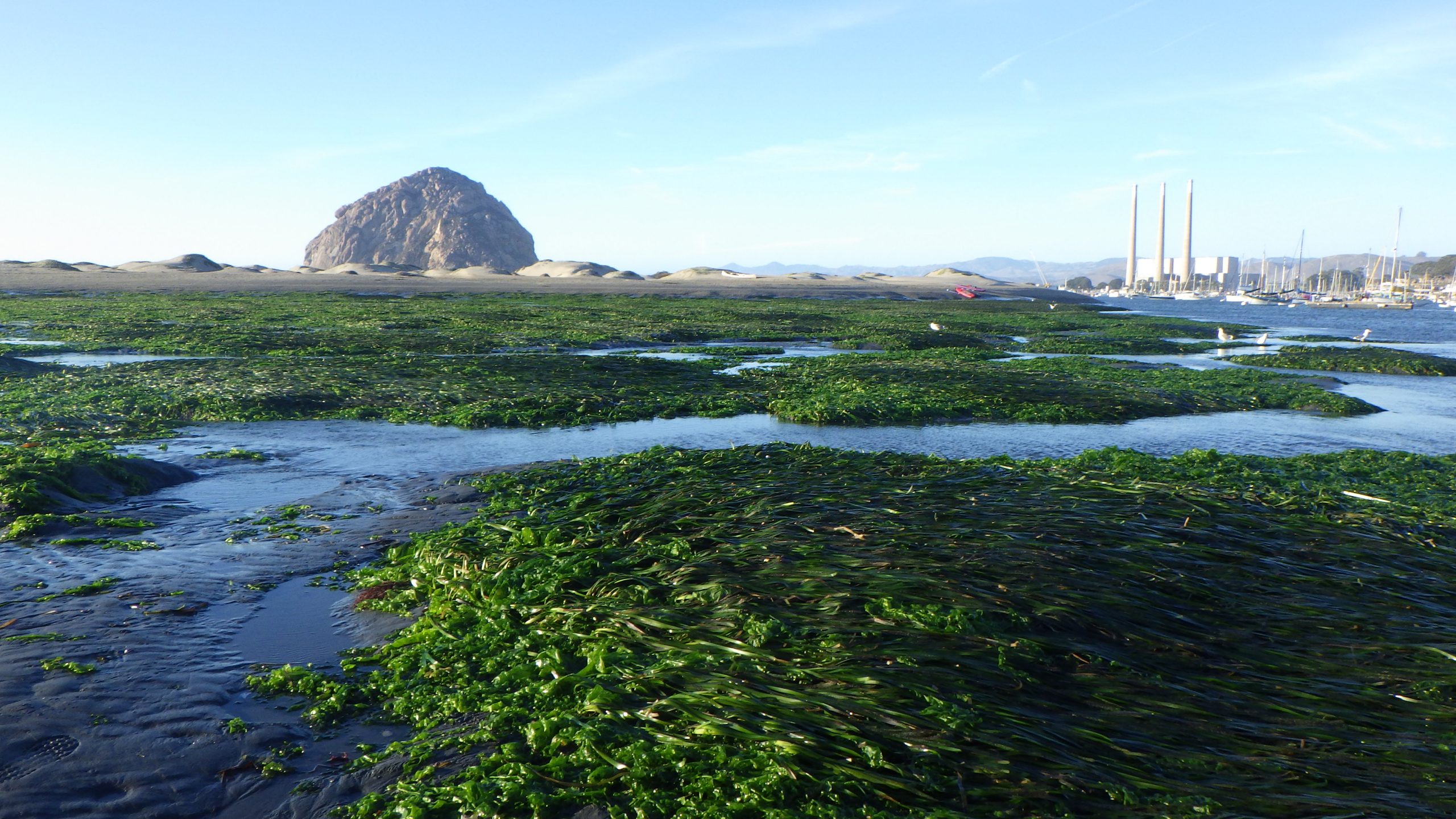
What is Eelgrass?
For two decades, the Estuary Program has been monitoring, researching, and restoring eelgrass in Morro Bay. Eelgrass is a flowering plant that serves many important functions in an estuary for water quality, habitat, and sediment stabilization.
Eelgrass habitat provides important ecological benefits and helps build a more climate resilient estuary. Eelgrass provides critical habitat for many species, including shelter for both juvenile fish and invertebrates, surfaces for fish eggs (e.g., Pacific herring), foraging habitat for shorebirds at low tide and for diving birds at high tide, and a critical stopover for migratory and wintering shorebirds along the Pacifica flyway including the migratory black brant.
In addition to habitat, eelgrass provides many ecosystem services that aid in estuary resilience and climate mitigation efforts. Eelgrass improves water quality by filtering out excess nutrients, increasing oxygen levels, and stabilizing sediment to allow for more light penetration. The stabilization of sediment also helps mitigate coastal flooding/erosion and the accelerating impacts of sea level rise. Seagrasses also sequester carbon and ameliorate the impacts of ocean acidification.
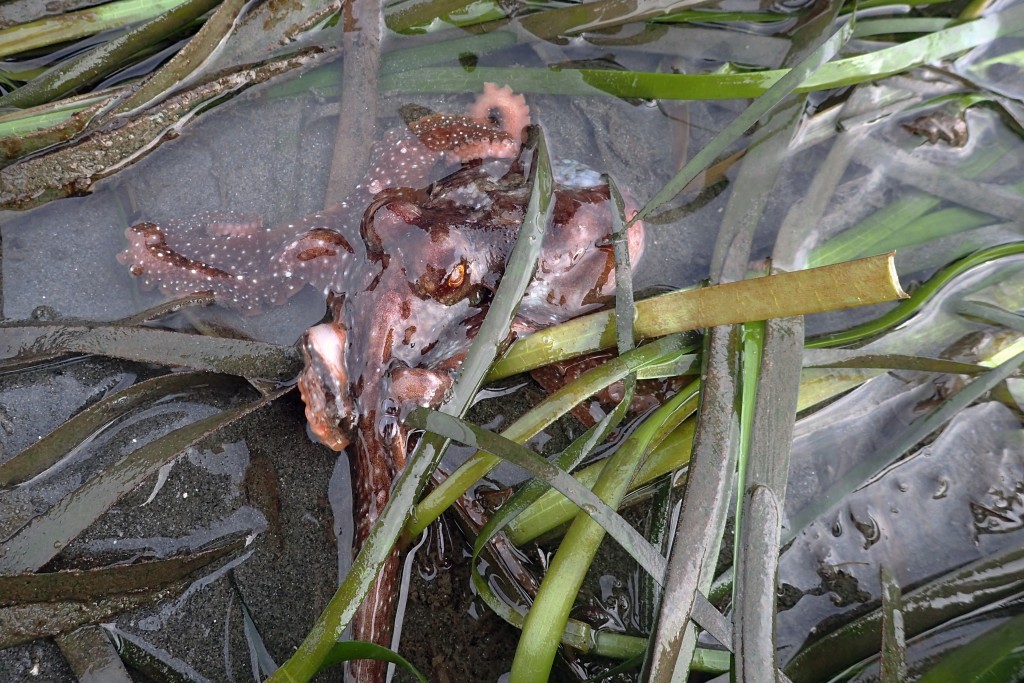
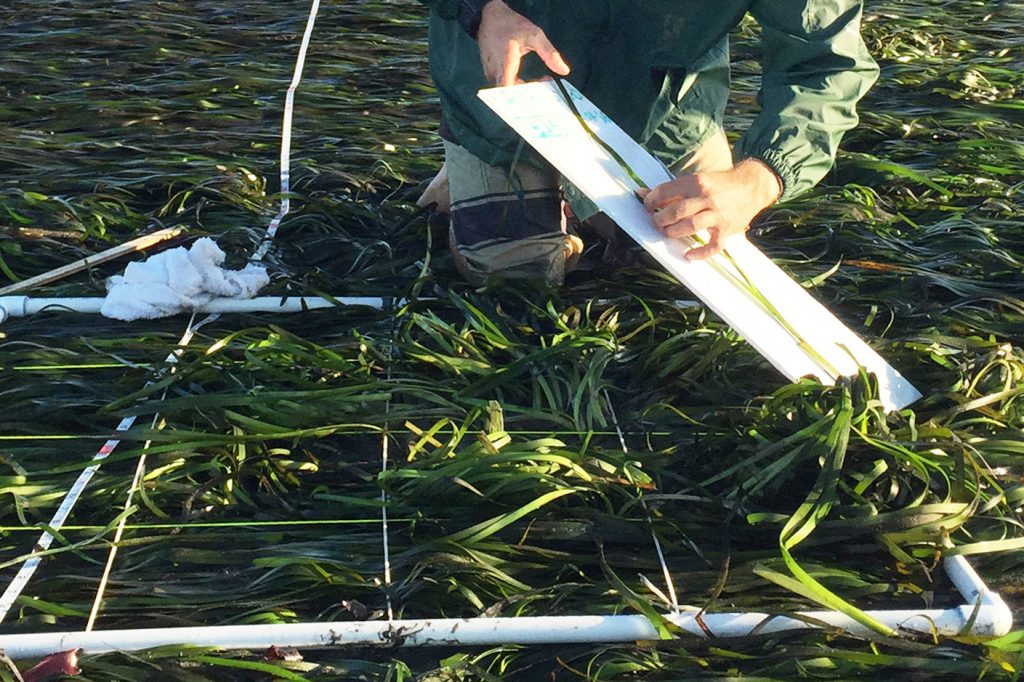
The History of Eelgrass in Morro Bay
The Estuary Program has been mapping eelgrass habitat for two decades. Multiple methods have been used, such as aerial flights, sonar, and drones, with total acres fluctuating over time given changing estuary conditions, time of year, and method of mapping.
From 2007 to 2016, eelgrass in Morro Bay declined by more than 90% with 13 acres mapped in 2017. In 2017, eelgrass began to re-establish in areas where it previously declined. In 2020, 146 acres were mapped. Given restoration efforts and significant natural establishment, there has been a major resurgence of eelgrass habitat, now reaching pre-decline levels with 500 acres mapped in December 2021. We are encouraged to see such a large expansion in eelgrass coverage throughout the bay in a short time.
Although the reasons for the decline and the fast recovery are not fully understood, there are likely multiple factors such as water quality and elevation that play a role in suitable eelgrass habitat in the bay.
Timeline of Eelgrass Acreage in Morro Bay
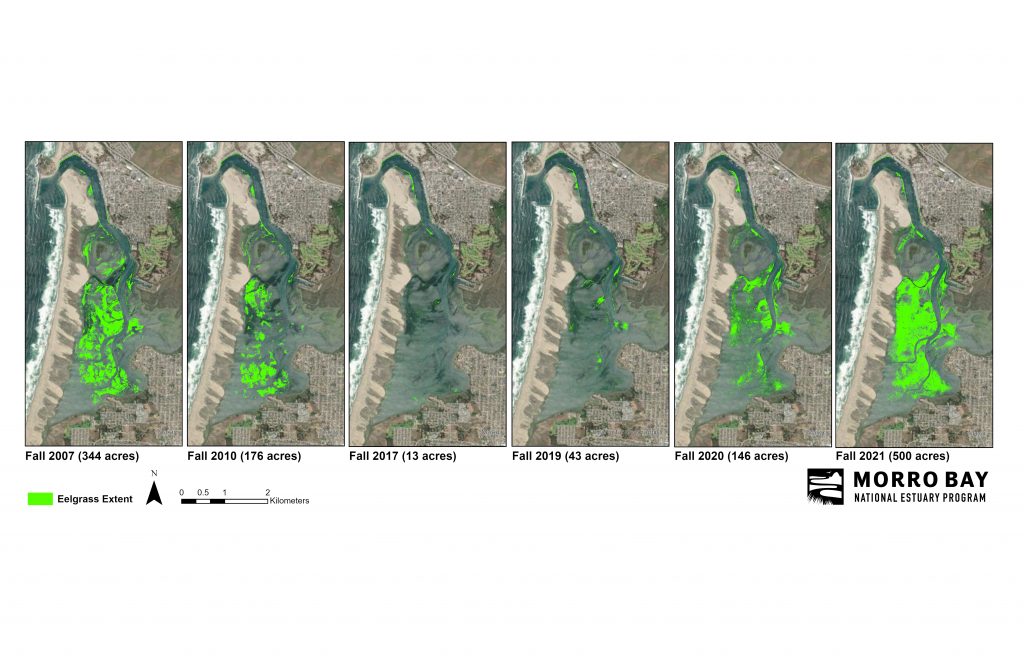
Eelgrass Monitoring & Research
The decline of eelgrass in Morro Bay has driven many monitoring, research, and restoration efforts. The Estuary Program has partnered with Cal Poly, Cuesta College, among others to better understand possible impacts to eelgrass and extend monitoring of water quality (e.g., temperature, dissolved oxygen, turbidity), nutrients, and bathymetric monitoring. At times there are conditions in the bay that aren’t ideal for eelgrass. We have also recorded changes in bay elevations given extensive eelgrass loss, which may support eelgrass in larger areas of the bay.
Our Monitoring Program also completes annual baseline monitoring of eelgrass health throughout the bay with reports viewable on our library page. From this monitoring, we have seen macroalgae increase in recent years and in some places outcompete (reduces light to eelgrass by covering it) eelgrass habitat. Given the dynamic nature of the estuary, we will continue to track total acreage and eelgrass health.

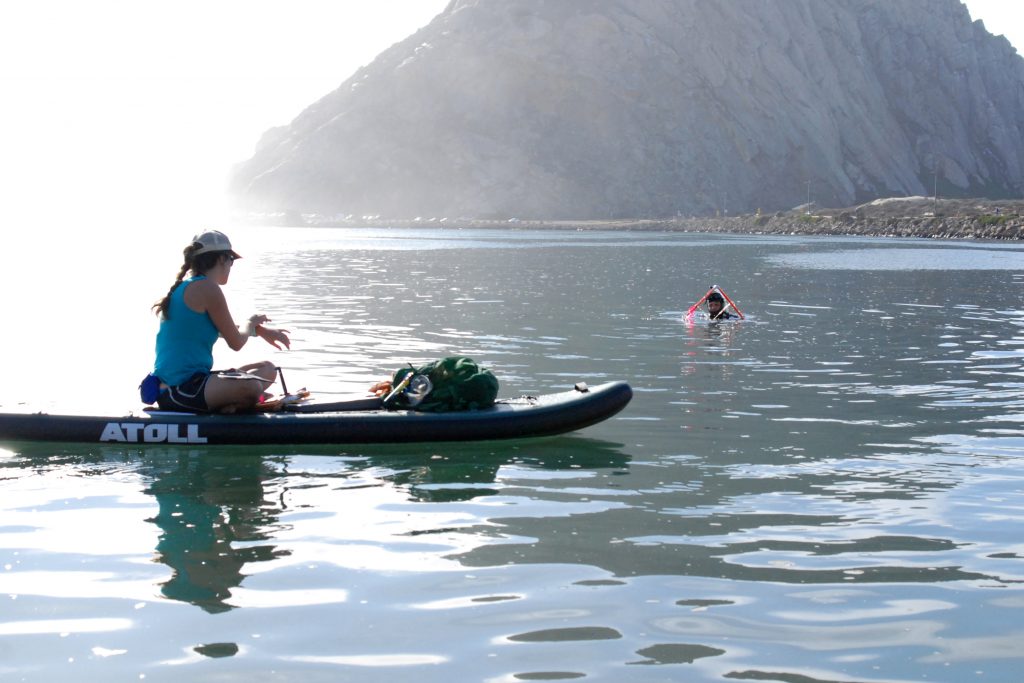
Restoration Work
The Estuary Program and our partners have put in significant effort to restore eelgrass. Three large-scale transplanting efforts occurred during the summers of 2012, 2013, and 2014. This effort wasn’t very successful but did provide valuable scientific knowledge and brought the local community together to participate in this restoration project. Starting in 2017, the Estuary Program and partners began pilot restoration efforts and have increased the scale of planting each year through 2021. Restoration efforts focused on planting a number of eelgrass ‘nodes’ from which habitat expansion can occur both through spreading of eelgrass roots and seed dispersal.
We also have learned effective restoration strategies such as the best time of year, anchoring methods, and locations. We have utilized extensive volunteer support in our restoration efforts and are grateful for the local community and grant funding supporting restoration. Funding has been provided by the California Department of Fish and Wildlife Duck Stamp, Pacific Marine Estuarine Fish Habitat Partnership, Restore America’s Estuaries Coastal Watershed grant, USFWS Coastal Watershed grant, NOAA, and the Black Brant Group.
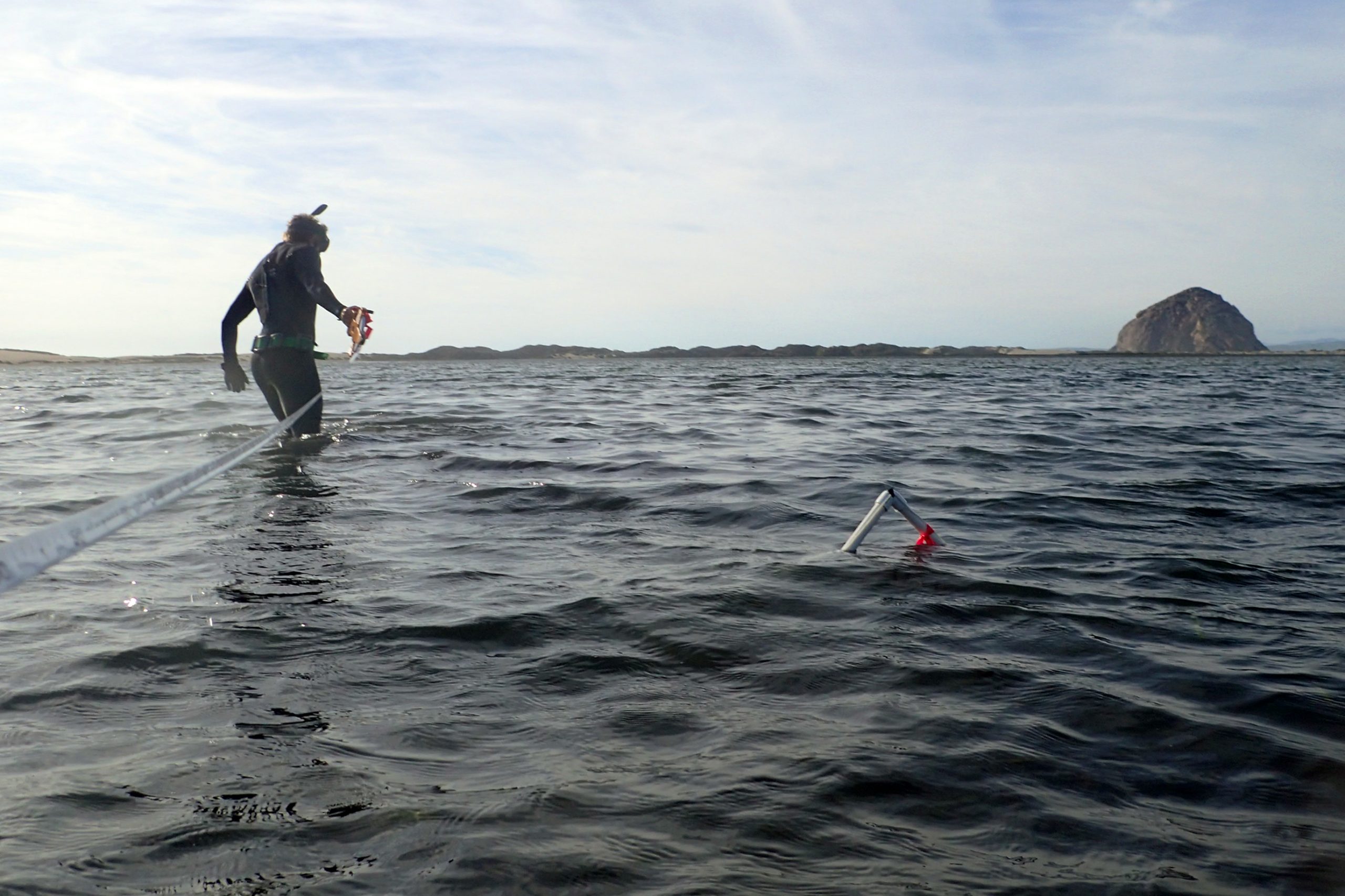
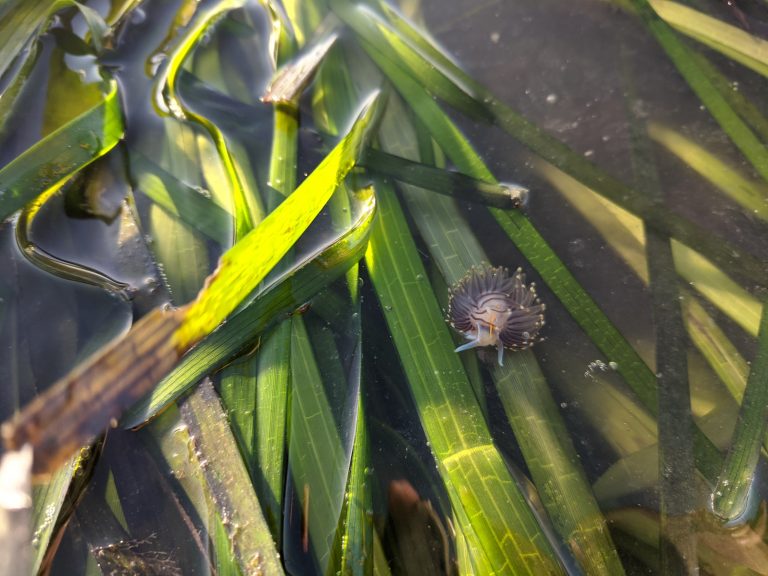
Want to learn more?
Visit our recent blog posts related to eelgrass, read our restoration and monitoring reports summarized annually on our library webpage. Eelgrass-related inquiries can be shared with Carolyn Geraghty, Restoration Program Manger at cgeraghty@mbnep.org.